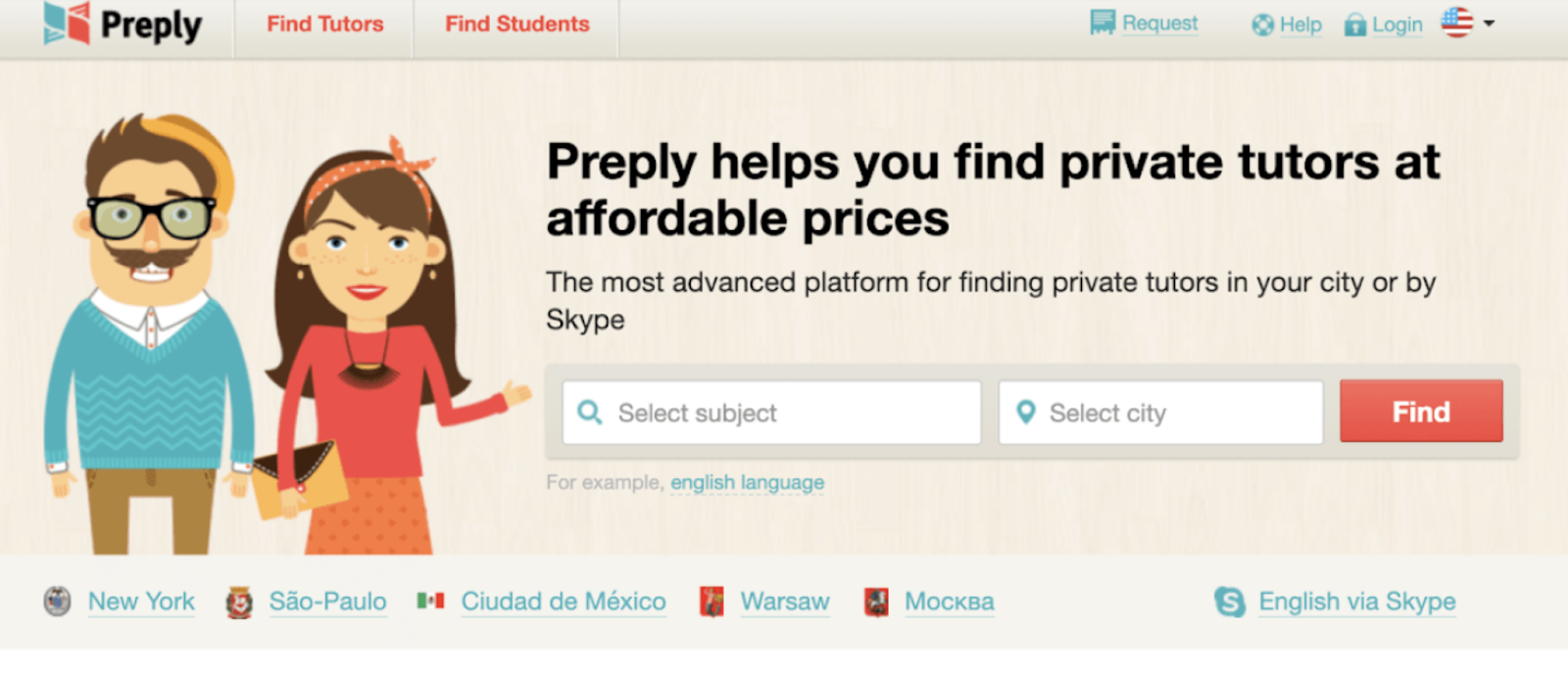Key Takeaway
By simplifying the home page and focusing on the tutor search tool, we increased the conversion rate to search results page views by 17% and increased average revenue per user by 11%.
Client Overview
Preply is an online marketplace connecting students with private tutors specializing in language learning and providing personalized, one-on-one language lessons. The platform's revenue model is based on charging a commission for each hour of tutoring booked through its system.

Preply's homepage is the main entry point for new users and a key step in the conversion funnel. Analysis suggested that distractions on the homepage were drawing attention away from the tutor search tool, leading to user abandonment.
Behavioral data indicated that encouraging users to scroll below the first screen reduced engagement with the search tool. Social proof elements and other features appeared to distract from the primary action, highlighting an opportunity to simplify the homepage and better focus user attention on the search tool.
Solution
To reduce distractions and improve user engagement with the tutor search tool, we redesigned the home page to remove unnecessary elements.
We removed distracting elements and highlighted the unique value proposition to encourage interaction with the search tool. The search tool was positioned on the first screen, ensuring users could engage without scrolling. Incentives to scroll below the fold were removed.
Results
The redesigned home page reduced cognitive load, aligned with the conversion goal, and improved transitions from home page visits to search results. This approach delivered measurable improvements for Preply, including: